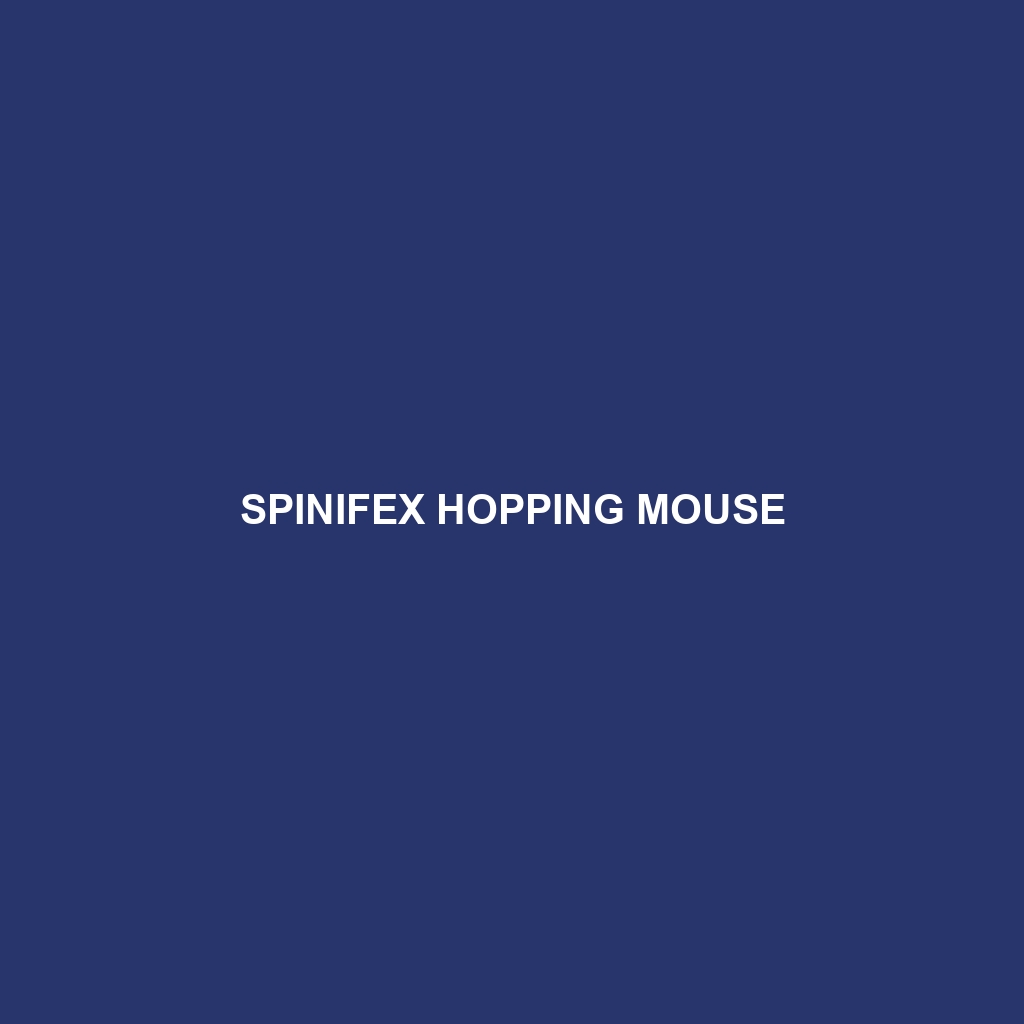Spinifex Hopping Mouse – Species Description
Common Name: Spinifex Hopping Mouse
Scientific Name: Notomys alexis
Habitat
The Spinifex Hopping Mouse is primarily found in the arid and semi-arid regions of central Australia. Its preferred habitats include spinifex grasslands, sandy dunes, and sparse woodland areas. These environments provide the necessary cover and food resources for the species, making them an ideal ecosystem for their survival.
Physical Characteristics
With a body length averaging 10 to 12 centimeters, the Spinifex Hopping Mouse is characterized by its long, tufted tail and large, round ears. Their fur is generally sandy to light brown, providing excellent camouflage in their native environment. Distinctively, this species has large hind feet adapted for hopping, similar to that of a kangaroo, allowing them to traverse their sandy habitats efficiently.
Behavior
Spinifex Hopping Mice are nocturnal creatures, actively foraging during the cool night hours. They are known for their unique hopping locomotion, which is not only fast but also energy-efficient. Socially, these mice are often solitary or form small groups, using complex burrow systems for shelter. Their ability to cover large distances in search of food and water makes them particularly interesting from a behavioral study perspective.
Diet
The diet of the Spinifex Hopping Mouse mainly consists of seeds, roots, and green plant material. They are known to have a specialized feeding habit, which includes storing excess food in their burrows for future consumption. Their foraging strategies are pivotal to their survival, particularly in the harsh conditions of their habitat.
Reproduction
Spinifex Hopping Mice breed once or twice a year, typically during wetter months when food resources are abundant. The gestation period is around 21 days, after which the female gives birth to a litter of 2 to 5 younglings. Notably, the offspring are born hairless and blind but develop quickly, becoming independent in just a few weeks.
Conservation Status
The Spinifex Hopping Mouse is currently classified as vulnerable due to habitat destruction and changes in land use. Efforts are ongoing to monitor and protect their populations in the wild, as they play an important role in their ecosystem.
Interesting Facts
One fascinating aspect of the Spinifex Hopping Mouse is its ability to survive without direct access to water, extracting moisture from its food. Additionally, this species has gained popularity in the pet trade, which has raised concerns regarding its conservation status in the wild.
Role in Ecosystem
The Spinifex Hopping Mouse plays a crucial role in the ecosystems of central Australia by aiding in seed dispersal and serving as prey for various predators. Their burrowing activities also help aerate the soil, contributing to the overall health of their habitat.
